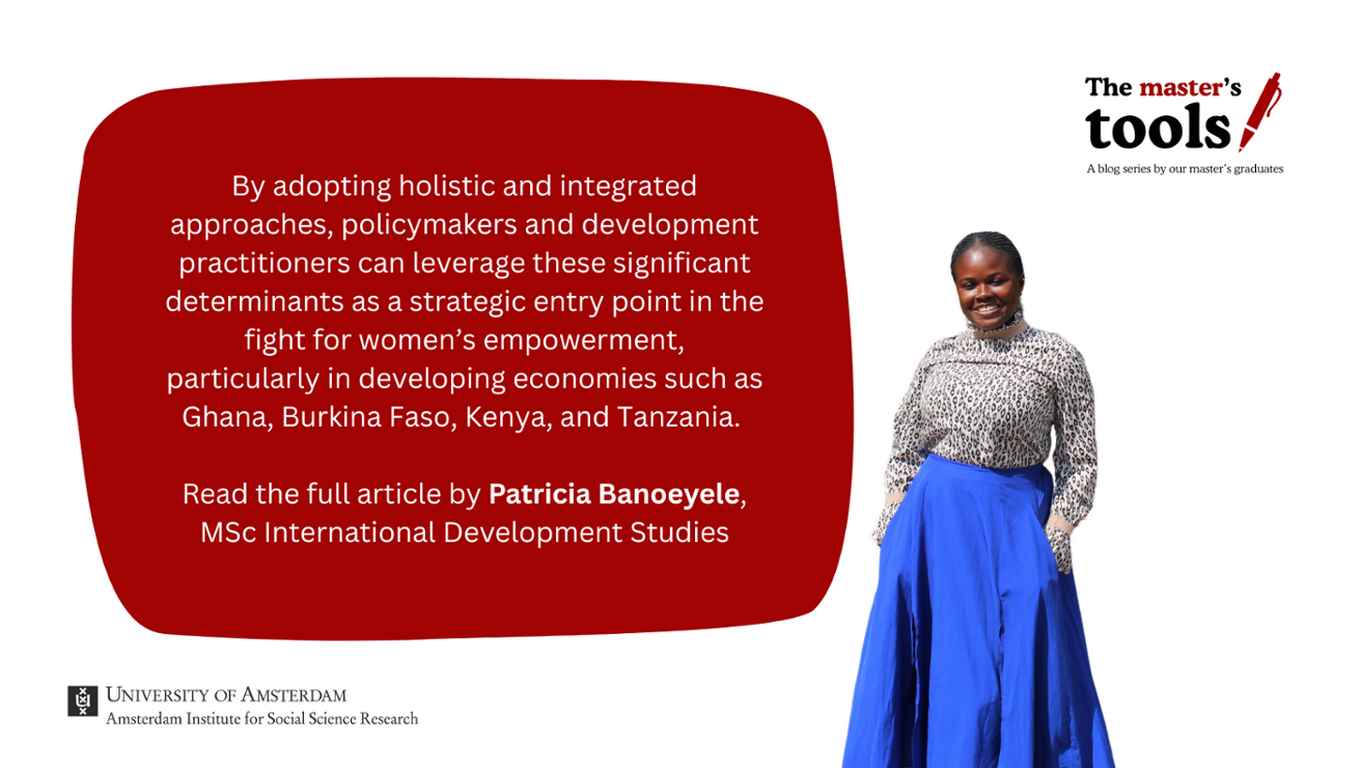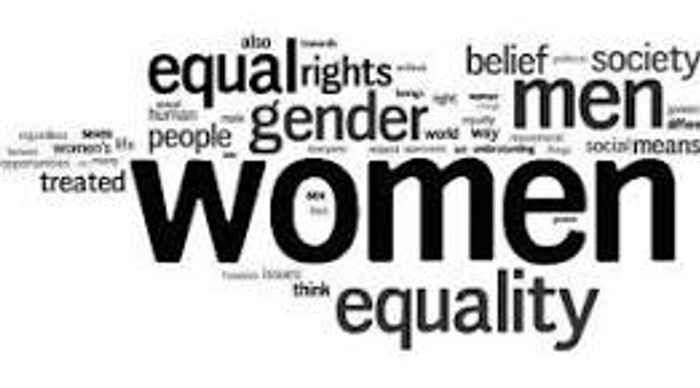Determinants of women’s empowerment in selected countries of Sub-Saharan Africa
The master's tools - blog by Patricia Banoeyele
21 August 2025

As a development practitioner, I have had the opportunity to interact with a diverse range of people, especially women, and the stories shared are heartbreaking, particularly in Sub-Saharan Africa. Women, even though formally educated, are held back from making decisions in relation to their health, earnings, and household decisions, among others. With an interaction with these women, cultural and social factors stand as a strong disruption to their empowerment, particularly in a region where cultural dynamics are crucially held onto.
Women’s empowerment is a multidimensional construct encompassing access to resources, decision-making power, agency, education, economic autonomy, mobility, and freedom from gender-based violence. Empowered women are better positioned to allocate household resources effectively, ensure diversified and adequate diets for their children, seek timely health care, and adopt preventive health behaviours (Abdulai et al, 2024). The Women’s Empowerment Framework (Longwe, 1991) and Kabeer’s Empowerment Theory provide a theoretical lens to understand these dynamics, highlighting five levels of empowerment: welfare, access, conscientisation, participation, and control; and three domains of empowerment for Kabeer’s theory: agency, resources, and achievement. These domains interact to either constrain or enhance a woman’s capacity to influence health and nutrition-related outcomes within the household and beyond.
Using data from the 2021/2022 Demographic and Health Surveys (DHS) from four Sub-Saharan African countries, the research employed the Alkire-Foster Methodology developed by Alkire and Foster (2008) to construct a multidimensional women’s empowerment index to explore the factors that determine women's empowerment in Sub-Saharan Africa. This methodology is used in the construction of the multidimensional poverty index; however, its design allows the user to utilise it in any phenomenon where most decisions (domains, indicators, and cutoffs) on its construction are left to the user. I used a logistic regression model to examine the factors that determine women’s empowerment. Adopting Kabeer’s Empowerment theory (Kabeer, 1999), which defines empowerment as the ability of one to make choices where she was initially denied, my research used 5 domains- agency, resources, income, leadership, and workload/time, and 15 indicators collapsed into 11 indicators to construct the women’s empowerment index. The independent variables used in my research were age, marital status, and education of the woman, residence, religion, wealth, sex of household head, age of household head, and education of husband.
After months of work, my research reveals that:
- Age, education of the woman, and wealth were significant determinants of women’s empowerment in Sub-Saharan Africa.
- This further explains that an increase in the age of the woman increases the likelihood of being empowered by 0.034%.
- Again, the results also indicate that the likelihood of a woman being empowered increases with the wealth status of the household. Women in the middle-class group of wealth increase the likelihood of women's empowerment by about 0.029%, and the richest group increases the likelihood of women’s empowerment by about 0.122% compared to women in the poorest group category. This means that higher incomes provide women with access to resources, including healthcare, education, and financial freedom, which could help them gain greater autonomy and control over their decisions. Women are also able to easily participate in political and economic activities when their income levels are relatively higher in society.
- My research also reveals that the likelihood of a woman being empowered increases with her educational level. The results indicate that the more educated a woman is, the higher the likelihood of her being empowered. This has a trickling-down effect on the income of the woman and healthcare outcomes and, therefore, should not be ignored.

In this line, my research findings indicate that socioeconomic characteristics of the woman play a key role in her empowerment journey and, therefore, in policy and program designs aimed at empowering women and girls, concentration should be placed on these characteristics. For instance, Ghana recently passed the Affirmative Action Act in July 2024, aiming at addressing gender imbalances in political, social, economic, and cultural spheres. The law mandates that at least 30% representation of women in public decision bodies by 2026. Again, in Kenya, the government provides funds like the Women Enterprise Fund and Access to Government Procurement Opportunities (AGPO) program to support women in business. Furthermore, non-governmental organisations such as Plan Ghana, Action Aid Ghana, CAPECS Ghana, among many, have projects and programs that build the capacity of women and girls in areas like skills development, innovation, and technologies, and support the girl child education. These are pathways to improve the income status of women and empower women at all levels in society.
In conclusion, this research provides empirical evidence that age, education of the woman, and wealth are key determinants of women’s empowerment in Sub-Saharan Africa. By adopting holistic and integrated approaches, policymakers and development practitioners can leverage these significant determinants as a strategic entry point in the fight for women’s empowerment, particularly in developing economies such as Ghana, Burkina Faso, Kenya, and Tanzania.
Even though there is much empirical work on women’s empowerment, I believe there is more work to be done in practice. These empirical works will aid theoretical work and policymaking; however, the practicality of empowering women needs all hands-on deck.